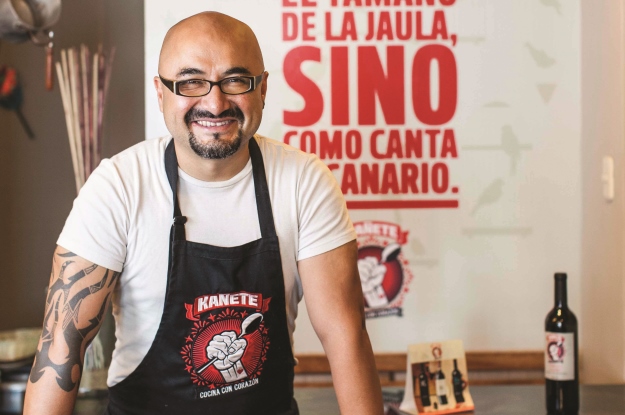See the rest of the AQ Top 5
At age 22, Israel Laura was working in an electric cable factory outside of Barcelona, where he had emigrated from Peru as a teenager. Faced with the uninspiring prospect of a life of factory work, and tired of bouncing from job to job, Laura decided to take a chance on another new career — in the restaurant business.
He soon enrolled at Barcelona’s Hofmann School of Hospitality, where his studies of haute Catalan cuisine introduced him to some of the finest restaurants in northeast Spain. But they also gave him a new appreciation for his native country’s food. “I realized that Peru had as varied a culinary tradition as Spain, if not more so,” said Laura, who returned home 10 years ago. “(So) I began to interpret Peruvian cuisine in my own way and style.”
It worked. Kañete, which opened its doors in July 2015, is a showcase for what Laura, now 39, calls a “new criollo” cuisine — one that honors the traditional flavors passed to him by his mother, while incorporating the ingenuity of Barcelona’s Michelin-rated restaurants. One of Laura’s goals at Kañete is to challenge perceptions of traditional Peruvian dishes as “too heavy, over-proportioned and cheap.”
Unlike most Peruvian restaurants, his approach uses the concepts and techniques he picked up in Spain, while experimenting with traditional Peruvian techniques and ingredients. However, straying from the norm led few to believe Laura could succeed — not least because of the location he chose. Most of Lima’s trendy restaurants are located in the upscale Miraflores and San Isidro, or artsy Barranco neighborhoods. But Laura gambled that his site in Lima’s historic center would not only gain attention, but attract crowds craving something different. According to Laura, Kañete’s location makes gourmet dining more accessible to the 90 percent of Lima’s 9 million inhabitants living outside the city’s high-end neighborhoods. Laura’s determination to avoid showy culinary gestures even extends to his menus, which are printed on plain Word documents.
“You can spend a $1,000 designing a menu, but what really matters is its content.”
When he isn’t in the kitchen, Laura travels across Peru interviewing small-town chefs for his local television program, Kriollo Gourmet. In a city where many face a choice between fast food and high-end gastronomy, Laura’s focus on perfecting the classics is refreshing.
—
O’Boyle is an editor for AQ.






